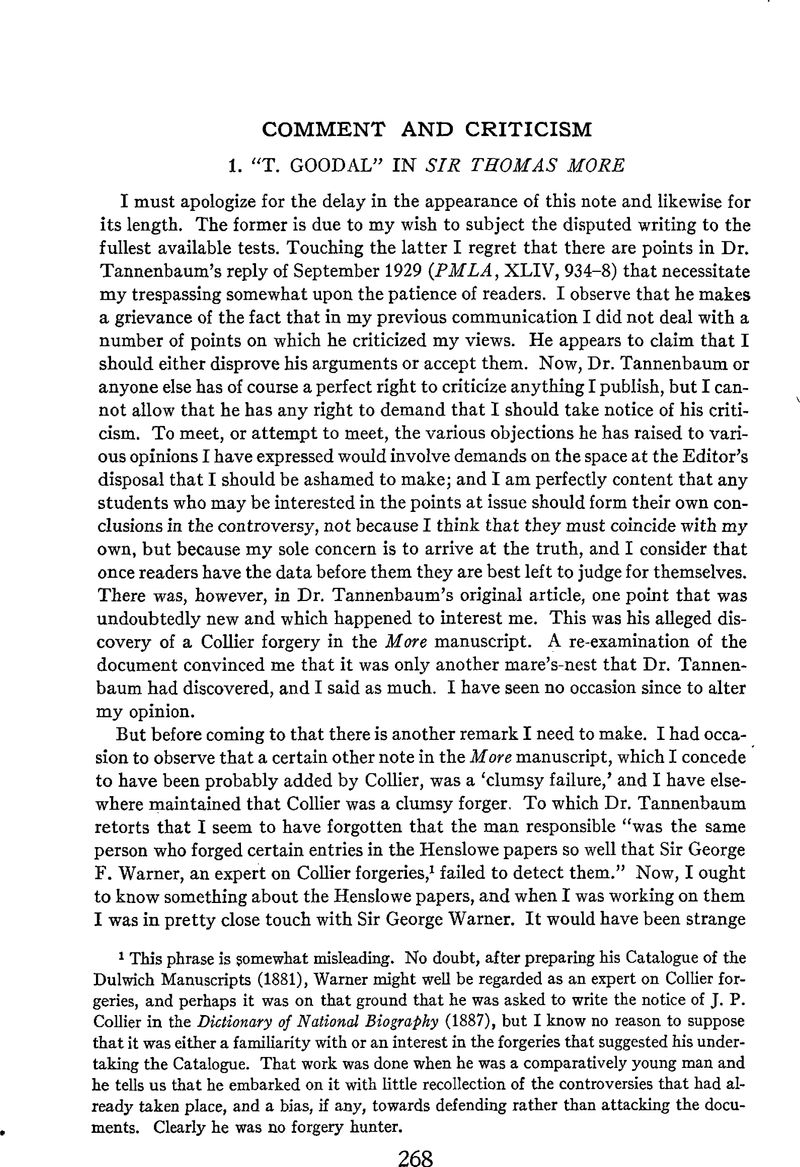No CrossRef data available.
Article contents
1. “T. Goodal” in Sir Thomas More
Published online by Cambridge University Press: 02 December 2020
Abstract

- Type
- Comment and Criticism
- Information
- Copyright
- Copyright © Modern Language Association of America, 1931
References
page 268 note 1 This phrase is somewhat misleading. No doubt, after preparing his Catalogue of the Dulwich Manuscripts (1881), Warner might well be regarded as an expert on Collier forgeries, and perhaps it was on that ground that he was asked to write the notice of J. P. Collier in the Dictionary of National Biography (1887), but I know no reason to suppose that it was either a familiarity with or an interest in the forgeries that suggested his undertaking the Catalogue. That work was done when he was a comparatively young man and he tells us that he embarked on it with little recollection of the controversies that had already taken place, and a bias, if any, towards defending rather than attacking the documents. Clearly he was no forgery hunter.
page 268 note 2 Naturally some are more clumsy than others, and Collier may, of course, have done better (or worse?) work elsewhere. Only yesterday, at the instigation of Sir Edmund Chambers, I was examining, in another Harleian manuscript, an entry which I am afraid must be regarded as spurious and presumably be credited to Collier. It is certainly more successful than the Henslowe forgeries, and has not I believe been hitherto condemned, but once challenged its suspicious nature can hardly escape notice.
page 268 note 3 I do not know whether Mr. Mitchell claims any palaeographical knowledge, but if his remark that “the d in ‘Goodal’ is of the type which is common in late eighteenth century writing and less frequent in the early nineteenth century” is intended to imply that it is not found in the sixteenth or seventeenth century, I can assure him that he is mistaken. Though not the typical form it is quite common.




